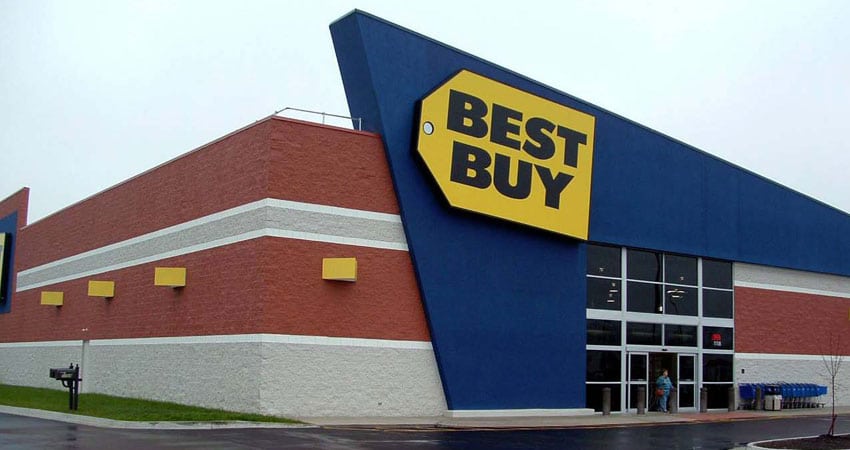Home electronics retailer Best Buy had a strong first quarter in ecommerce, with online sales up 22.5% over the same period last year, as profit also grew thanks to cost-cutting moves in the supply chain and other areas that are ahead of schedule.
Having the ability to fulfill online orders from all of its 1,363 U.S. stores – a rarity among omnichannel retailers – is also part of the supply chain savings story for Best Buy.
Ecommerce is a growing portion of the business, representing 13% of Best Buy’s domestic sales in the quarter, up from 10.6% in 2016 and ahead of the consensus average of 10% of U.S. retail sales.
There’s even evidence Best Buy is gaining ground on Amazon in its category. According to Slice Intelligence, Amazon’s Q1 share of online electronics sales decreased from 48.9% to 46.7% compared to a year ago, while Best Buy went up from 7.8% to 8.9%, based on data from 1.63 million consumers.
Best Buy CFO Corie Barry told analysts on an earnings call that automation is playing a major role in the company’s cost-cutting measures, which reached the three-year goal of $400 million in savings three quarters ahead of schedule. The company has now increased its target to $600 million savings by fiscal 2021.
“There are places like our supply chain, there are places like some of our call centers where we believe we have real opportunities to become more automated,” Joly said. “With the retail landscape evolving so quickly, many times you’re putting in stopgaps as quickly as you can and you’re not thinking about how to streamline it or how to automate it. And now what we’re finding is when you take the time to step back, get a really smart group of people together and look at how could we do this better, how could we automate it, that’s the place where we’re starting to see some real opportunity.”
Best Buy CEO Hubert Joly said the company is investing in large-product fulfillment to support business growth and improve the customer experience, while working closely with vendors to improve inventory visibility and in-stock levels.
“We are also optimizing our supply chain process capabilities through standardization and training,” Joly said. “Additionally, we’re selectively adding distribution center capacity to support business growth and get products closer to the customer.”
Asked how Best Buy has been able to show margin improvement even as ecommerce sales increase – which at many retailers has led to margin declines due to increased shipping and logistics costs – Barry said it is thanks to aggressive cost reduction across the board.
“As you see the online business grow and you see the customer demands around speed and choice continue to evolve, we do believe that over time, we need to continue to invest and make sure we’re delivering in ways our customers want,” Barry said. “Obviously when we talk about the cost reductions, we always talk about the inherent pressures in our business as a piece of what we’re trying to offset. That’s why we continue to believe the cost reduction is so important. It’s because of the pressures you can see not just in the channel shift but in how people want to get their products and how we’re fulfilling.”
While Best Buy continues to strategically reduce its physical footprint, closing 12 large-format stores and 40 Best Buy Mobile locations in the past year, Joly said they remain profitable and no dramatic reductions are planned. In all the company has closed 85 stores in the past two years.
“[The stores] are a great asset from the standpoint of the customer experience on the more complex categories or experiences, and they’re a great asset from a shipping and logistics standpoint,” he said. “So there’s no sea change that we are seeing more gradual continued evolution of our approach to real estate.”
“It’s always a little bit choppy initially, given promotions, liquidation and so forth, but we believe we’re seeing some lift in the sales in the stores of course around their locations in appliances and home theater,” Joly said. “To provide some order of magnitude, their appliances and home theater business is about $2 billion, and we’ll get a share of that.”

